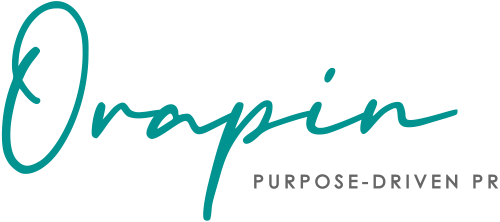
Understanding common PR misconceptions is important to yield success for your campaign
Whether you are captaining your own PR campaigns or you’ve hired an agency to support your efforts – you may find that you, your team, and/or organizational leadership have high expectations for big PR results from day one. When people think of PR, they think of media relations. In reality, PR is much much more than that! But expectations tend to center around media pitching and the resulting stories that everyone wants to see. We’ve been at this PR game for quite some time now, and over the years we’ve seen some of the same myths come up time and time again. Here is our guide to understanding common misconceptions and how to turn myths into real legends.
PR Myth #1: A press release will get you press coverage.
A press release can serve many purposes, but thinking that just because you put out a press release you’ll get media attention is a myth. A press release is simply a piece of content that includes all the information pertaining to a big announcement. But sending out a press release won’t get you on the front page of the Wall Street Journal, or even yield a spot on your local broadcast TV station.
Press releases tend to be drafted in formal language and stick to the facts. As such, they are a bit dry and boring. For example, if you are announcing the start of a new program to support moms struggling with substance misuse challenges, you would use a press release to collect and state the fact that the program is launching and all the details about the program – the who, what, where, when, why, and how. But the real storytelling, and compelling angle for the media, will be about the impact that the program creates. The “why” that explains the need the program addresses and the stories of the moms’ lived experiences are what the media will cover. All of this information, the stories that pull at the heartstrings and elicit an emotive response, would be captured in your pitch.
PR Truth #1: An individualized email (aka “a pitch”) to your press contacts is what will yield the story.
It is critically important to send a pitch that explains why the story is relevant to the reporter’s audience, how it is timely, and the greater impact it will have. We’re not saying you should skip the press release altogether – they do serve an important purpose. Copy and paste the press release at the bottom of your pitch email so that reporters have all the information. In addition, we usually recommend posting a press release on a free newswire to generate a link that can be used to share the information on social media sites or your website.
PR Myth #2: Only “big name” media outlets are worth pitching.
Yes, The New York Times, Today Show, and Wall Street Journal are on everyone’s wish list. And sometimes you’ll have a story that is worthy of that kind of “silver platter” media hit. However, most stories will not make the front page. If you have an amazing story, you should absolutely pitch the big outlets, it is always worth a try. But, if they say “no” or don’t respond, don’t give up! It is always worth casting a wide net as far as pitching is concerned. And if your story gets picked up by an industry or trade publication, that’s a win. If you get covered in the local news, that’s a win, too. Just because an outlet isn’t perceived as “high caliber” doesn’t mean it holds no value.
PR Truth #2: Local and/or niche media outlets with a dedicated and highly targeted audience, are just as valuable – if not more so – than the big guys.
Never discount the value of local media coverage as well. Your hometown paper and broadcast stations can do wonders in helping to promote your mission and values. And you never know which national network journalist is watching or listening! Smaller sites have inherent value in building momentum and in reaching the right audience. Once you start to build a portfolio of those types of hits, the bigger outlets will be more likely to take interest.
PR Myth #3: You need media connections to secure coverage.
In the PR world of yesteryear, PR professionals and journalists would build long-lasting symbiotic relationships. PR firms would often specialize in a specific niche area, say cosmetics and fashion, and would have the editors for Elle on speed dial. In today’s world, the masthead is lean. Budget cuts have affected nearly every outlet and the legacy staffer is a figment of the past. Sure, there are still some of them out there, but we frequently see reporters hopping from publication to publication, or wherever they can find work. In addition, there are many freelancers out there taking their place and writing for many different pubs and sometimes across different beats. The idea of your pitch being as successful as “who you know” is really not the truth in today’s PR world.
PR Truth #3: A good story – shared via a good pitch sent to the right reporter – is the most important factor in whether or not you will secure media coverage.
Sure, sometimes having a relationship with a reporter will help, but anyone can forge relationships by connecting with reporters on social media, engaging with them, and pitching them good stories. If you are sending someone a story that is newsworthy, timely, and relevant to their audience, they will likely take note. And if they don’t this time around, they will at some point if you keep up the effort.
PR Myth #4: You should only pitch the media when you have a major announcement.
Pitching the media when you have a major announcement is all well and good, and you certainly should share your big news. But if you wait until those big announcements come around – be it once a year or once a quarter – you are missing out on valuable opportunities to connect with media contacts, share your thought leadership, and stay top of mind. Consider too that not every organization has “big news” that comes up on a frequent basis. Many mature organizations keep chugging along year after year, and that big announcement moment may not come up that frequently. That doesn’t mean they aren’t consistently pitching the media.
PR Truth #4: The most successful PR strategy is one that focuses on consistency.
There are many ways to connect with the media outside of those moments when you have big news. Pitching evergreen story ideas, case studies, or timely stories tied to a relevant holiday or observance are just as valuable. Reactive pitching – sending an op-ed or response to an existing story – is also incredibly effective from a thought leadership perspective. Look for ways to stay in touch with your target reporters every month. If you are consistently pitching good stories, reporters will take note. You’ll be top of mind when they need an expert opinion or quote. And when you do have that big announcement to share, you’ll likely see better results due to the work you’ve put in throughout the year.
PR Myth #5: Hiring a PR firm means you’ll get lots of press coverage.
We see this one come up time and time again. An organization hires a PR firm and then expects instantaneous results. Three weeks into the engagement the executive director is wondering why they haven’t been interviewed by NPR yet. Here is the thing, PR is a long game. It can take time to build momentum, and results don’t necessarily happen overnight. If you have a major announcement to kick off your PR engagement – say you’ve released an original research report that changes the whole way clinicians might approach a specific behavioral health concern – then you may get excellent coverage for that particular news story right off the bat. But the ongoing and consistent coverage takes time and effort, particularly for organizations that have never engaged in PR before. You may have to pitch a reporter every month over the course of a year before they take note. It can be a slow process, but that’s just the nature of the game.
PR Truth #5: PR firms can’t guarantee overnight results. Building a name for your organization and your executive director takes considerable time and effort.
As a purpose-driven company, you likely have amazing stories to tell. Curating those stories, and getting timely, relevant pitches out to targeted reporters is your PR firm’s job. In addition to pitching stories, PR firms can support expert positioning strategies, thought leadership opportunities, and help build your organization’s online presence. PR is so much more than just media pitching. Beyond the flashy headlines, there is much success that can be had when you maintain constant communication with your target audiences, donor pool, and constituents.
Take PR myth and turn it into PR legend
Understanding the nuances of PR strategy will help you see success. At the end of the day, we all want to feel confident that our efforts are generating results. A good understanding of what kind of PR effort will yield what kind of result will ensure you, and your CEO, feel satisfied that PR is worth the investment of time and resources.
PR can have an incredible impact on an organization in terms of providing opportunities for visibility, reach, and amplifying the voice of the leadership. Knowing how, where, and when to focus your efforts is the key to success.

Rhiannon Hendrickson is the founder and CEO of Orapin, which helps purpose-driven organizations transform their random acts of PR into a strategic, consistent approach that generates greater awareness and impact. She has worked with organizations of all sizes across myriad industries and causes to develop earned media and thought leadership programs that generate awareness, engagement, and, ultimately, support for those that are making a meaningful impact.
